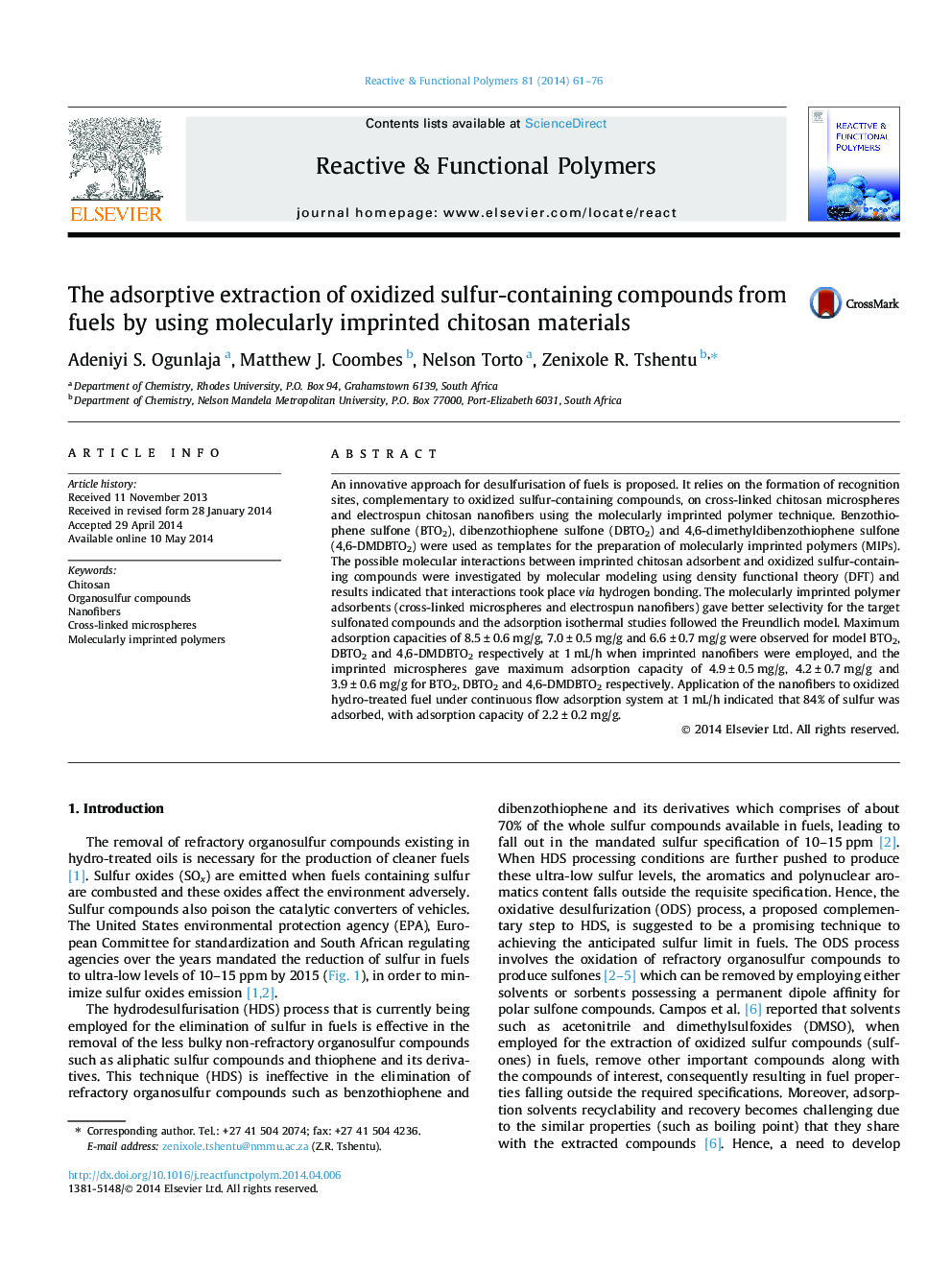| Article ID | Journal | Published Year | Pages | File Type |
|---|---|---|---|---|
| 5209912 | Reactive and Functional Polymers | 2014 | 16 Pages |
An innovative approach for desulfurisation of fuels is proposed. It relies on the formation of recognition sites, complementary to oxidized sulfur-containing compounds, on cross-linked chitosan microspheres and electrospun chitosan nanofibers using the molecularly imprinted polymer technique. Benzothiophene sulfone (BTO2), dibenzothiophene sulfone (DBTO2) and 4,6-dimethyldibenzothiophene sulfone (4,6-DMDBTO2) were used as templates for the preparation of molecularly imprinted polymers (MIPs). The possible molecular interactions between imprinted chitosan adsorbent and oxidized sulfur-containing compounds were investigated by molecular modeling using density functional theory (DFT) and results indicated that interactions took place via hydrogen bonding. The molecularly imprinted polymer adsorbents (cross-linked microspheres and electrospun nanofibers) gave better selectivity for the target sulfonated compounds and the adsorption isothermal studies followed the Freundlich model. Maximum adsorption capacities of 8.5 ± 0.6 mg/g, 7.0 ± 0.5 mg/g and 6.6 ± 0.7 mg/g were observed for model BTO2, DBTO2 and 4,6-DMDBTO2 respectively at 1 mL/h when imprinted nanofibers were employed, and the imprinted microspheres gave maximum adsorption capacity of 4.9 ± 0.5 mg/g, 4.2 ± 0.7 mg/g and 3.9 ± 0.6 mg/g for BTO2, DBTO2 and 4,6-DMDBTO2 respectively. Application of the nanofibers to oxidized hydro-treated fuel under continuous flow adsorption system at 1 mL/h indicated that 84% of sulfur was adsorbed, with adsorption capacity of 2.2 ± 0.2 mg/g.
